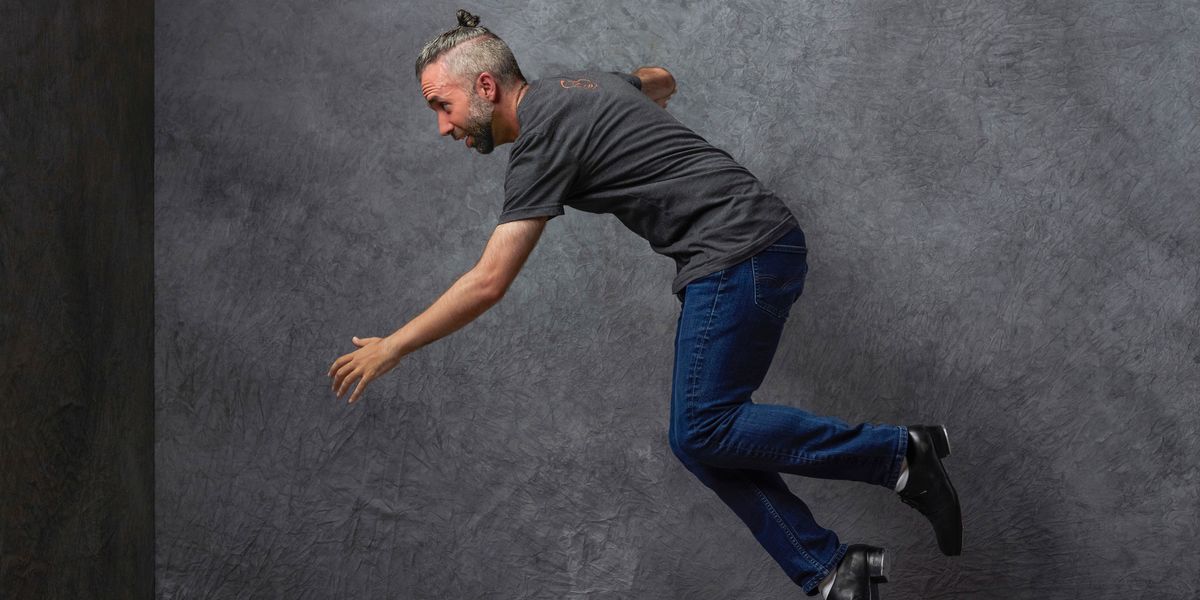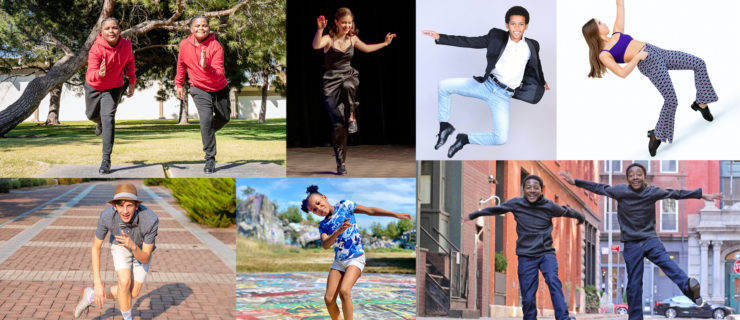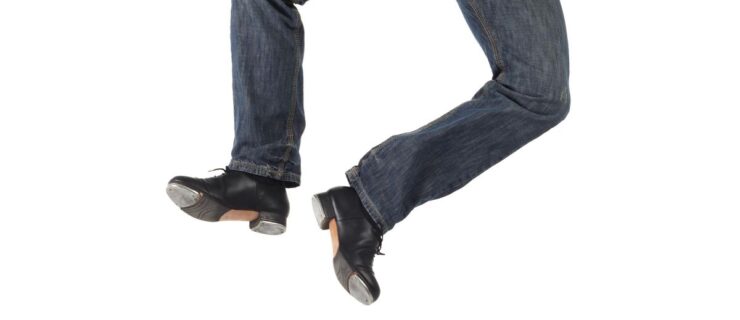A Need for Speed: Tap Pros Offer Tips to Master Faster Footwork
You’re in tap class and the teacher breaks down a complex phrase. You think you understand it, but when the music comes on, the speed and intricacy of the combination seem like more than your feet can handle.
It can be discouraging to feel as though your technique fails you as the tempo picks up, but you can train your feet to keep up with faster, trickier rhythms. DS talked to two master tappers to get strategies for increasing speed without sacrificing precision.
Start Slow
Before rehearsing those rapid rhythms, it’s important to break down the footwork. Andrew Nemr, a tap educator who directs the company Cats Paying Dues in New York City, recommends that dancers slow down their steps and practice them with an exaggerated physicality. “Your body will learn the most efficient and clearest way to produce sounds,” he says. “From there, you can speed them up, just like drummers and pianists do when they practice.”
Sarah Reich, an L.A.-based teacher and choreographer who has toured internationally with Postmodern Jukebox, suggests beginning under-tempo.
“Find the point where you’re solid with the step, and the point where it can easily get messy,” she says. “The more you practice that sweet spot, the more you can push yourself to get a little faster.”

Lee Gumbs, courtesy Sarah Reich
Everything in Its Place
Dancing double-time can be frustrating when you don’t hear yourself making all the sounds you’re aiming for. But the problem may be that your feet lack the muscle memory for what a step should feel like when done correctly. “When practicing, you have to focus on the accuracy of your placement,” says Nemr. “Where on the floor is your foot going? What does your body need to do to support that placement?”
For example, if you’re working on grab-offs, be specific about whether you’re landing on a flat foot or on the ball of your foot. When you add shuffles, know exactly where you want the shuffle to strike the floor and what part of the toe tap you are using. “It’s not just about the foot being able to do what it does,” he says. “It’s about making sure the body is in the right place and not just along for the ride.”
Reich uses a rhythm turn as another example of this strategy in action. She tells her students, “The more you cross, the more you get around,” to remind them that the shuffle has to cross in front of them in order to complete a successful turn. When the step is done quickly, proper placement of the shuffle is essential to get around in time. If the shuffle is too big, that will also slow down the turn. “Making steps smaller gets you more speed,” she says.

Nemr performing a tap solo (Dayna Szyndrowski, courtesy Nemr)
Keeping Time
It’s not enough to work on executing a phrase faster and faster. Dancers have to understand how increasing their speed affects their musicality.
Nemr, who wrote the ebook Rhythm Theory for Tap Dancers, suggests using a metronome and practicing a step such as a paddle and roll in 1/4 notes, 1/8 notes, 1/8-note triplets,16th notes, 16th-note triplets and 32nd notes. This exercise will help finesse both technical accuracy and rhythmic accuracy simultaneously. “Then you’re not just practicing fast,” he says. “You’re practicing in relationship to time.”
Reich agrees that if dancers want to speed up, they should pick a specific subdivision of notes, such as the ones Nemr names. Otherwise, as she warns the participants in her Tap Music Project intensives, whoever is listening won’t be able to decipher the rhythms. Once dancers are able to tap comfortably in that pattern, they can start to branch out from it or add syncopations. “Know what you’re doing so it can come across as music, not just as noise,” she says.

Jeremy Jackson, courtesy Reich
Loosen Up
The thought of having to perform a particularly fast sequence might cause a tap dancer to tense up. But Reich points out that the key to speed is to relax the joints. She believes dancers should begin their practice by shaking out their ankles as if they were “dead fish.” “Using your knee and your leg to get things done will allow you to move faster than using your ankle for each individual note,” she says. For example, rather than focus on striking the floor to make each of the sounds in a phrase like “scuff dig spank,” Reich recommends thinking of it as “straighten your knee, drop your leg, lift your leg.”
A good warm-up, Reich says, should include both relaxed ankle work—such as shuffles, flaps, and flap-heel patterns. “You want to have it all ready to use in your improvisation or if the choreographer is asking something of you,” she says. “Putting it in your warm-up is a way to make sure you’ll nail it every time you dance.”
By going back to the basics, spot-treating problem areas, and gradually building strength and flexibility, speeding up your taps will be a breeze in no time.




